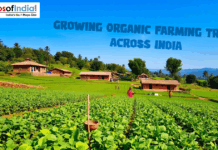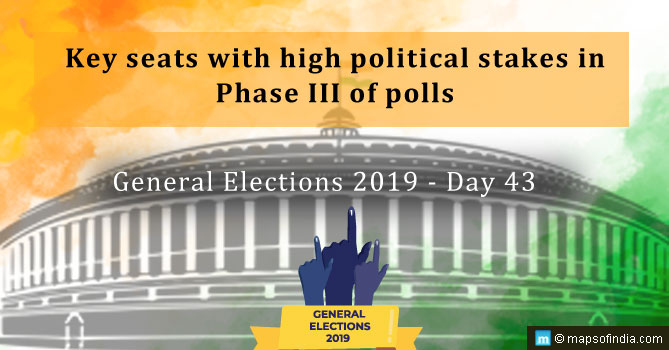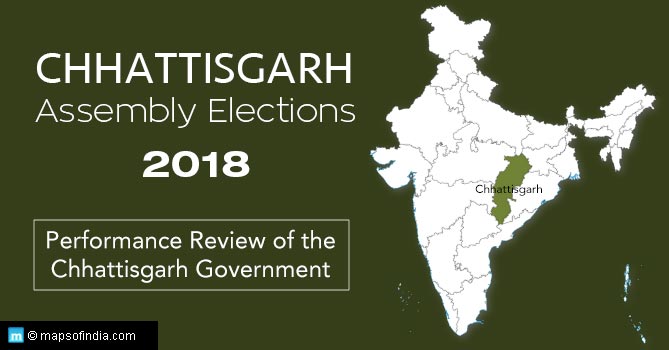
Chhattisgarh goes to polls in November 2018 to elect the next government, and political parties are stepping up the ante in trying to catch voter attention with claims and counter-claims. In the din of high-pitched electoral rhetoric, it is a good time to pull back and make a realistic assessment of the ruling government and the possibilities of election outcomes.
Chief Minister Raman Singh of the BJP has been at the helm since 2003 and is completing his third consecutive term at the office. The big question is – will he make it a fourth or is the state in for a surprise.
A fair assessment of challenges and achievements and its impact on the outcomes is on the following broad parameters:
Politics
BJP has traditionally been strong in the region before Chhattisgarh’s separation from Madhya Pradesh. The party has been in power since 2003 and since then, has overseen the consolidation of the party at the grassroots level. Despite Congress’s attempts at a revival and the prospect of anti-incumbency, Raman Singh continues to stand unchallenged as the best-placed leader to lead the state for the fourth consecutive time, but is likely to get lesser seats than 2013 Assembly elections.
Main challenge: Anti-incumbency after three consecutive terms. JCC could eat away some votes.
Economic Impact
The Gross State Domestic Product (GSDP) of Chhattisgarh has been growing at 10.75% since FY11-12 and stood at $45.26 billion in FY17-18A, marking significant economic development in the mineral-rich state. The 3 million tonne Nagarnar integrated steel plant, a game-changing Greenfield project in Nagarnar, 16 km from Jagdalpur in Bastar, is to be inaugurated in a few months. This project will change the social and economic dynamics in the tribal belt of Bastar, a vastly underdeveloped and Naxal-affected region. It is expected to reap rich political dividends for the Raman Singh-led BJP in the forthcoming elections and also in 2019 general elections.
The state has witnessed major investments in the manufacturing sector, mineral, and agri-related sectors, creating several new employment opportunities.
Improved Public Distribution Schemes (PDS) have helped in the more efficient distribution of subsidized food to underprivileged sections. These are all expected to help improve the electoral chances of the ruling party.
Main challenge: Low MSP on agricultural produce, farmer loans, and job creation remain challenges.
Health
Since 2003, the state has witnessed higher investment in the health sector including primary, secondary and tertiary sectors. In FY18-19 Budget, the state government announced plans for upgrading 283 Primary Health Centres into 24×7 services. Also, free pathology and radiology services are now provided at all district hospitals and community centers. Allocation for Anganwadi nutrition rates for pregnant women, children and teenage girls, have all been increased. These moves are expected to bring rich dividends in the forthcoming elections.
Main challenges: Availability of good quality doctors, lack of specialized healthcare services in tribal and underdeveloped areas remain thorny issues.
Infrastructure
High investment in state infrastructure since 2003 has resulted in vastly improved services delivery across the state, besides attracting domestic and international investment.
The Indian Railways has announced setting up of two major electrified railway lines that will cut through the state. Private equity for the first phase has been raised. Once completed, the two railways lines will act as a catalyst to industrial and social development in the state. Though its impact may not be visible in the forthcoming assembly elections, the government’s initiative is well-received by the common man.
Main challenges: Lack of rail and road connectivity is hampering faster development.
Social Impact
Chhattisgarh has a high density of tribal and other SC/ST communities, most of whom have had to suffer extreme poverty and backwardness. A lot has changed since 2003. Regions of Bastar, Dantewada, and Sukma, which were adversely affected by the Naxal militancy, are undergoing positive change. Improved education, health, and employment opportunities are helping wean people away from the militant ideology. In 2013 assembly elections, Congress won a higher share of votes than the BJP in Bastar. This year, the BJP is confident of an improved performance.
Main challenges: More needs to be done on poverty alleviation and removing social exclusion.
Chhattisgarh – Political
2018 Assembly Elections: November 12 and 20
Assembly seats: 90
Main political parties in the fray:
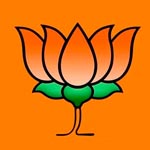 |
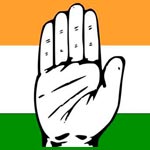 |
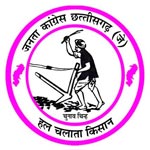 |
 |
| BJP | INC | JCC | BSP |
Chhattisgarh – Economic
- GSDP: FY 11-12: $32.97 billion; FY17-18A: $45.26 billion
- Rank in Ease of Doing Business: 4th
- Installed Power Generation Capacity (July 2018): 13,526.79 MW
- Iron Ore Production FY17-18: 30.27 million tonnes
- The share of Coal Reserves: 17%
- The highest share of Tin Ore Reserves: 35.4%
- The share of Diamond Reserves: 4%
- The share of Dolomite Reserves: 36.5%
- The share of Limestone Reserves: 5.4%
- Limestone production April 2017-Feb 2018: 32.98 million tonnes


